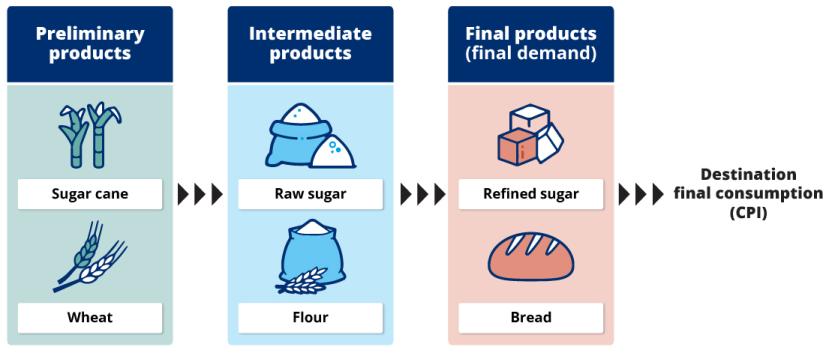What are the Producer Price Indexes?
The Australian Producer Price Indexes (PPIs) are a collection of indexes that measure the price change of products (goods and services) as they leave the place of production or as they enter the production process. This price change is measured from the perspective of the industries that produce goods and services. Other measures, such as the Consumer Price Index (CPI), measure price change from the consumers' perspective. When measuring prices from the seller’s perspective, factors such as distribution costs, taxes and the impact of government subsidies are generally excluded.
What is Final demand?
Final demand measures the price change of products (goods and services) consumed with no further processing. For example, sugar cane is a preliminary product and used as an input into the production of raw sugar. In turn raw sugar is an intermediate product which is then used to produce the final product, refined sugar. Final demand captures final products destined for final consumption, with no further processing.
Illustrated below are two examples for the three stages: preliminary, intermediate, and final for sugar and bread.
Image
